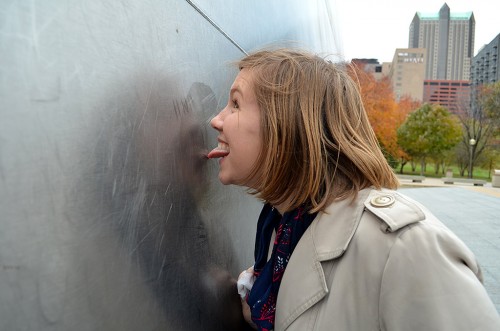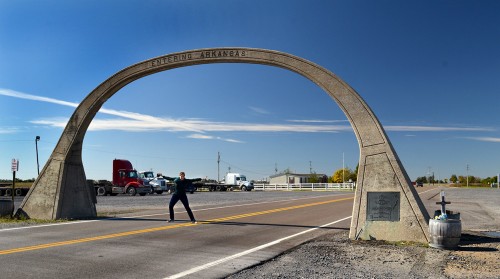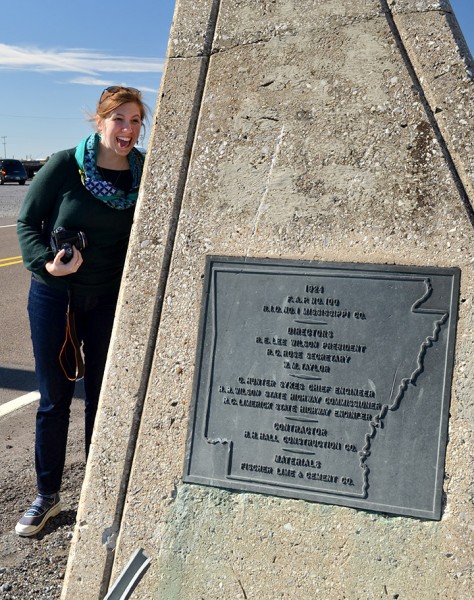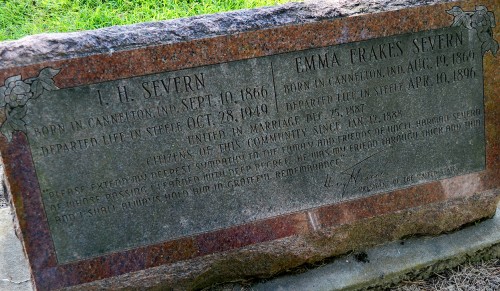 I’m starting a new project. David Kelly, whose family has farmed in the Pemiscot county area for generations, asked if I’d like to work on a documentary about the Missouri Bootheel.
I’m starting a new project. David Kelly, whose family has farmed in the Pemiscot county area for generations, asked if I’d like to work on a documentary about the Missouri Bootheel.
After spending most of the driving on back roads and getting a feel for part the area, I mentioned that I was surprised to not see more small churches and cemeteries. He said we were near one that had an interesting tombstone bearing a presidential signature.
Isaac Harmon Severn obituary
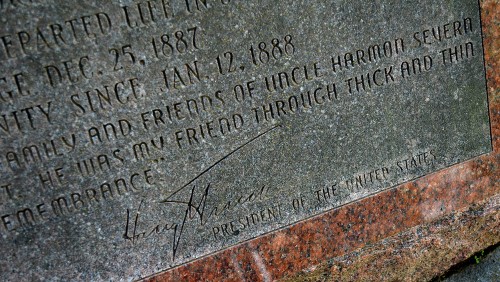 The sun was coming from the wrong direction to get a really good shot (click on it to make it larger), so I’ll let an obituary posted on the Find A Grave site fill in the blanks. (It’s a lot longer than I’m posting here, so you might want to follow the link.)
The sun was coming from the wrong direction to get a really good shot (click on it to make it larger), so I’ll let an obituary posted on the Find A Grave site fill in the blanks. (It’s a lot longer than I’m posting here, so you might want to follow the link.)
If we were to die tomorrow, do you think perhaps the next day our family would receive a message of condolence from the president of the USA? For most of us, the answer is no. But for the family of Isaac Harmon Severn of Steele, who died here in 1949, the answer was yes. His friend, Harry S Truman was president of the United States and was told about Severn’s death (probably by their mutual friend Judge Roy Harper but that is uncertain). So Harry sent a telegram to the family expressing his sorrow at the death of his friend and political ally and that message continues to attract attention at a local cemetery.
Truman and Severn good buddies
Truman and Severn had been good buddies, “big political friends,” as some put it, and fellow Democrats, for some years. Severn, Harper, Max L. Kelley and others journeyed together to political rallies at such places as Springfield or Kansas City.
And so it was that when Harmon Severn died, HST reached out from Washington, D.C. to touch the grieving family. They appreciated that and decided to inscribe Truman’s message on Severn’s gravestone: “Please extend my deepest sympathy to the family and friends of Uncle Harmon Severn, of whose passing I learned with deep regret. He was my friend through thick and thin and I shall always hold him in grateful remembrance.”
Never forgot a friend
Harry never forgot a friend, it has been said, and he obviously never forgot “Uncle Harmon” – his friend in the deepest part of the Bootheel of the state that sent him to the Senate, a stepping stone to the White House.
Woodrow Davis, a grandson of Mr. Severn, remembers that the message from Truman was a telegram, so it would not have had a handwritten signature. However, the maker of the headstone was able to duplicate a signature from another source, and thus this attention-compelling stone.
“Give ’em hell, Harry”
There are those who think Mr. Severn might have been responsible for the slogan,”Give-em Hell, Harry.”
Severn used to yell out that phrase when Harry Truman would jar down on a particularly telling point while addressing crowds in pre-election gatherings in Steele. It may be that others did the same and that the phrase did not originate in this community, but some think it did. They recall political speeches at Main and Walnut when Mr. Severn shouted out the slogan while punctuating the air with his walking cane.
Severn took on the railroad
In 1910, Severn sued the St. Louis & San Francisco Railroad Company for $175, the value of a mare he said was killed by a train that “omitted to either sound the locomotive whistle or ring the bell when approaching the road crossing at a distance of eighty rods therefrom.” He won the suit, but it was reversed on appeal because of confusion over whether the horse was killed in Cooter township or Virginia township.
I bet he punctuated the air with his walking cane when he heard the verdict.

